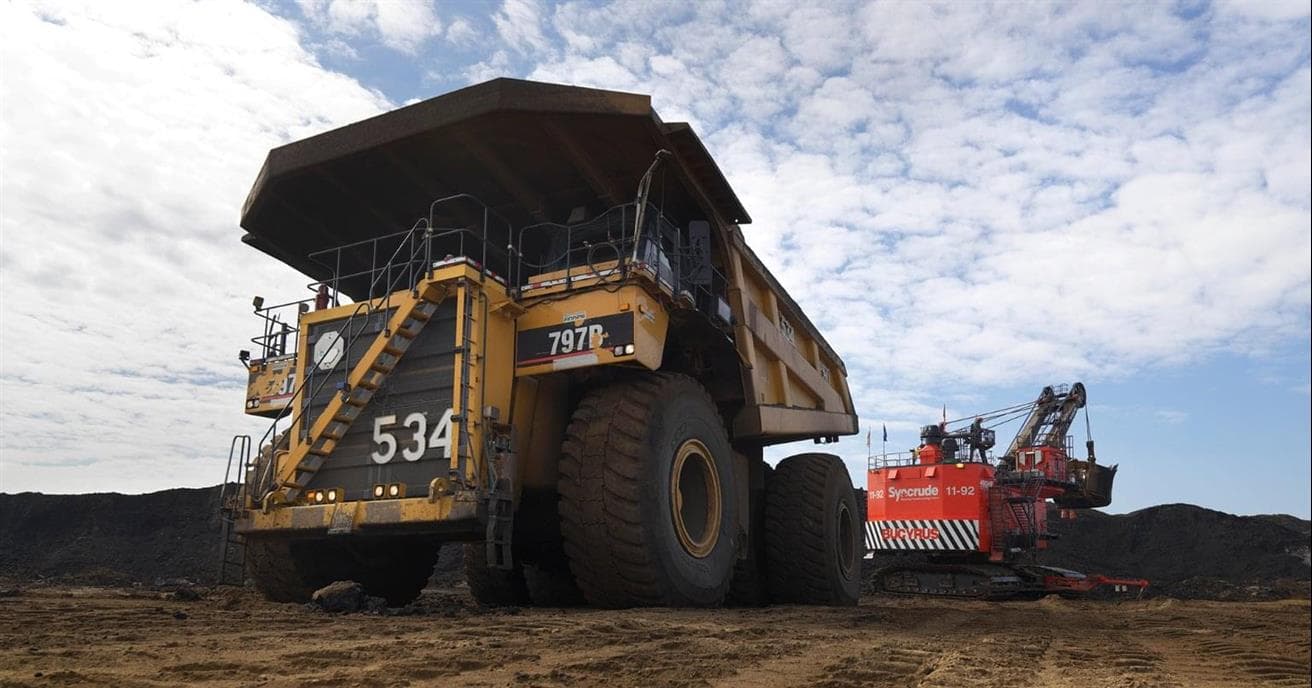The teams that keep the massive trucks and shovels operational at the Aurora Mine don’t work quite that fast. However, through planning, teamwork, and dedication to maintaining the fleet, they’re hitting high bars for truck and shovel availability, which helps the bottom line.
Truck availability at the Aurora Mine experienced a banner year moving ore in 2022, with the fourth consecutive year setting availability record for the truck fleet and notching the second-best oil sand tonnage at 111.7 million tonnes, just 63 kilotonnes — or around 150 truckloads — short of the record.
José Alvarado, Director, Maintenance & Reliability, is proud of how the teams work together to achieve these milestones, noting that the higher the availability the more material the company can move using its own fleet. This offsets the need to rent costly equipment to move the same amount of material.
“I value the collaboration between the teams that allows us to keep the availability high and costs low,” José says.
What makes the operational success at Aurora remarkable is the cost savings. Although a routine oil and filter change for a haul truck can cost $1,600 and schedule repairs and replacing parts can cost even more, buying a new 797 for the fleet would cost millions of dollars to buy new.
Geoff Shantz says this is a testament to everyone involved in the operations. The Senior Reliability Advisor has over 30 years on the job — including spending time underneath the hoods of the big units — and understands what it takes to maintain the fleet of 797s given the punishing conditions associated with an oil sands mine in northern Alberta.
“We have very soft underfoot conditions; it’s like driving a truck across a marshmallow,” Geoff says. “This affects the frame tremendously because the trucks are twisting as they carry 400 tonnes. We’re in a tough environment.”
Geoff likens the teamwork required to keep the big haulers roadworthy to a three-legged stool. The first leg involves working with the manufacturer to design and build the trucks for the mine. The second leg entails operating the trucks properly and monitoring truck operations to identify issues and before they happen. The third leg requires properly maintaining them to remedy potential problems and carry out this work at the right time.
“You have to design it right, operate it right, and maintain it right,” he says. “If you’re missing any of those three legs, the stool falls over.”
Geoff adds that the team takes pride in achieving high availability numbers and fixing the trucks right the first time. “Everybody works as a team. We all have a common goal.”
Meanwhile, the team maintaining the mammoth shovels that load the ore onto the trucks achieved the highest yearly shovel availability for the Aurora fleet since 2006 at over 88 per cent.
Charles Boone, Manager, Aurora Mine Mobile Reliability, also notes that, as is the case with the 797 trucks, the shovel teams are keeping the fleet operating longer.
“Our oldest shovel at Aurora has about 132,000 hours, exceeding the original benchmark of 90,000 hours,” he says.
Charles says that focusing on the maintenance program and finding ways to work more efficiently also makes a difference. For example, the shovel maintenance teams have designed and built steel platforms to help technicians service the shovels, which limits downtime.
“We’re doing a really great job sticking to our maintenance plans, which makes a big difference.”



.jpeg?mw=304&modified=20220228224956&hash=7DAF6272B5625298C1818615B4B6A9FC)
